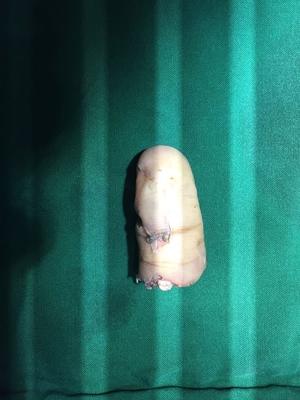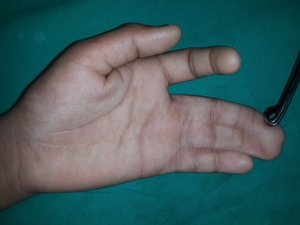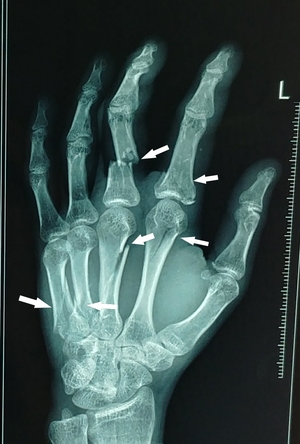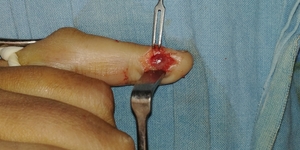
Trigger Finger - Dr Nilesh Darawade Trigger finger is a phenomenon where patients find it tough to move the finger freely. Depending on the stage of disease it may start as pain at ba...
Dr Nilesh Dattatray Darawade - Consultant Hand Surgeon Pune 
Replantation - Dr Nilesh Darawade Reattaching a completely separated [replantation] part of or whole hand [or leg] has been possible due to advances in surgical techniques now. This...
Dr Nilesh Dattatray Darawade - Replantation Hand Surgeon Pune 
Paediatric Hand Disorders - Dr Nilesh Darawade Hand disorders in children present a unique situation compared to hand disorders in adults. Bony problems in children are more challenging because ...
Dr Nilesh Darawade - Hand Surgeon Pune 
Fractures of hand - Dr Nilesh Darawade Fracture is break in continuity of bone. Most commonly this happens due to trauma although in certain diseases bone may break without any apparent ...
Dr. Nilesh Darawade 
Tumours in Hand - Dr Nilesh Darawade Tumour in general refers to swelling in any part of body although practically it denominates a new mass that has formed. Tumours could be benign or...
Dr. Nilesh Darawade - Consultant Hand Surgeon 
Tendon Transfers for regaining lost function - Dr Nilesh Darawade Tendons are strong cord like structures which start from fleshy belly of muscles and are inserted onto bone on which the action of muscle is intend...
Dr Nilesh Darawade - Orthopedic Surgeon Pune 
Healthy bones Cases of weak bones (osteoporosis) and life-changing fractures from falls are on the increase. Find out what you can do to keep your bones fit for purpose whatever your age.
NHS 
Trigger finger Trigger finger is a condition that affects the tendons in the hand. When the affected finger or thumb is bent towards the palm, the tendon gets stuck and the finger clicks or locks. It's also known as stenosing tenosynovitis or stenosing tenovaginosis.
NHS 
Tendonitis and other tendon injuries Tendons are strong bands or cords of tissue that attach muscle to bone. They help move the bones and joints when muscles contract. The main types of tendon injury are: tendonitis – inflammation of a tendon
NHS 

